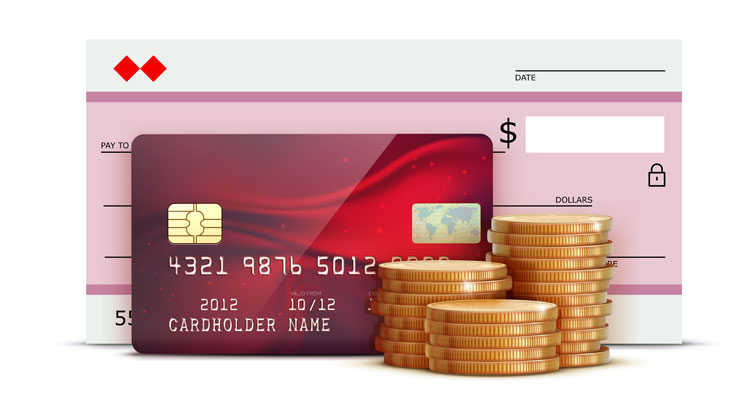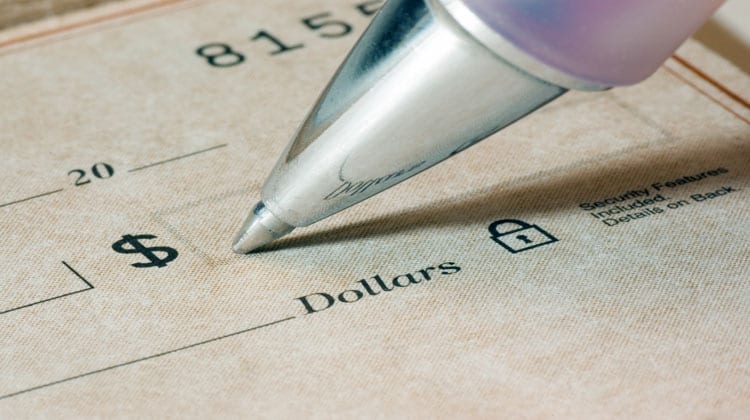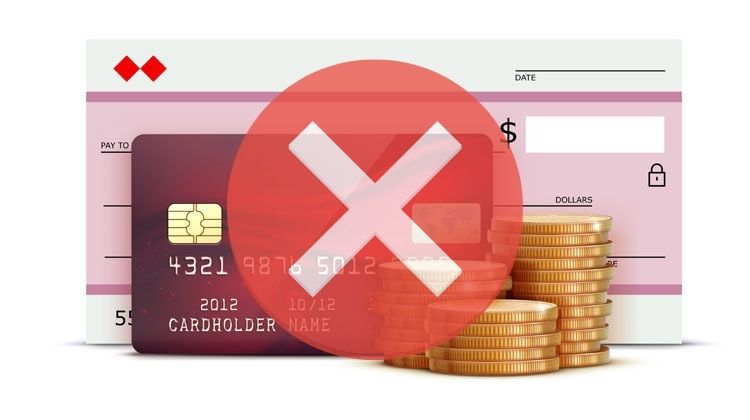THIS POST MAY CONTAIN AFFILIATE LINKS. PLEASE SEE MY DISCLOSURES. FOR MORE INFORMATION.
People often confuse convenience checks with normal checks, but this can be a major misunderstanding and can deeply affect your credit. If you use convenience checks you get in the mail as regular paper checks, you will be in for a nasty surprise.
In this article, we will take a closer look at what convenience checks are, the pros and cons of using them for credit card payments, and everything you should know before using them.
Let’s dive in!
Table of Contents
Convenience Checks: Everything You Need To Know
Let’s understand what convenience checks are and learn more about them in detail.
Not Your Average Check

Convenience checks are not offered to you to spend money from your checking account. Instead, these are blank checks that are offered by your credit card issuer as a means to encourage you to spend money.
They work like a personal check in that you can make the check out to the merchant for the amount of your purchase and then sign it. The merchant then presents it to their bank, which cashes it for them.
Since they are not tied to your checking account, the money does not come out of this account. Instead, it is drawn from your credit card account, causing you to have a credit card balance.
It’s important to know they have a higher interest rate than your purchase APR and there is a cash advance limit, typically lower than your credit card’s credit line.
In the end, a convenience check functions the same as a cash advance that you might be able to request with your credit card.
- Read now: Learn how to use credit cards wisely
Knowing this before you go spending any money you don’t have is very important.
How Do I Get One?
Sometimes, a credit card company might send you convenience checks as an easy way to encourage you to open up a line of credit with them.
However, credit card checks are often ordered by the person with the open line of credit or sent as part of a monthly statement.
If you don’t get paper statements in the mail, your credit card company might send you them every so often. Another way is to log onto your account or call your credit card company and request one.
Where Can I Cash It?

The good news about convenience checks is that you can cash them anywhere you can cash a regular check.
- Read now: Discover the best places to cash a check
However, some banks may only provide you with the partial cash value of your check and deposit and hold the rest of it in your bank account. This is because they want to limit fraud and ensure the funds are available to cover the check amount.
The last thing the bank wants is to cash a check for $10,000 only to find out they are only able to get $5,000 for the check.
As you would with any other financial service, make sure that you carefully read the fine print before using the convenience checks offered by your credit card company.
Make sure you understand the cash advance fee that is charged, the cash advance interest rate, and any extra fees.
- Read now: Find out the pros and cons of using credit cards
- Read now: Here are the most common credit card mistakes people make
It is also important to know if there is any grace period offered, but know that most credit card companies do not offer a grace period on credit card cash advances. This means interest charges begin to accrue from the day you take the cash advance, not 25 days after, like typical credit card purchases.
Also, credit card companies will send you balance transfer checks too. A balance transfer check is quite similar to convenience checks in that you can pay anyone who accepts a check. But instead of acting like a cash advance, they act like regular purchases on your credit card.
Knowing this information and how to use these checks can help you avoid any issues along the way.
Pros and Cons of Using Convenience Checks
Let’s take a look at the pros and cons of using these checks.
Pros
Their benefits include:
1. Pay for Rent or Utilities
If you find yourself short on cash for things like rent or utilities, you can use a convenience check to pay for them, which you wouldn’t be able to do with a credit card.
2. Quick Help in Emergencies
They give you access to quick cash in emergencies that you can immediately pay back later. For instance, if you find yourself unable to pay for something due to a debit card or checking account error, convenience checks would help you out.
3. Pay Your Balances
They are often advertised as great ways to pay other credit card balances you owe.
Put simply, the major benefits of a convenience check are that you’re able to get the cash you don’t have in your checking account and pay for things that you might not be able to pay for using your credit card.
Cons

There are plenty of downsides that come with using convenience checks if you’re not careful or knowledgeable enough about these financial tools:
1. Racking Up Even More Debt
As with any other aspect of your credit card company, they charge interest on the amount you take, and missed payments can end up costing you more than what you cashed your check for.
If you can’t pay back the amount immediately, it’s best not to borrow it to begin with.
Due to the high cost from fees and interest rate, you shouldn’t use these checks for new purchases. So instead of falling into the trap of spending money you don’t have, they should be reserved for critical situations where you absolutely cannot go without money.
2. No Grace Periods
When you fail to pay the full amount that you borrowed, you will face penalties and consequences that will make it harder for you to recover as you struggle to pay off both the check and your credit card in full.
Keep this in mind if you do ever use a convenience check as they offer no grace periods.
3. You May Go Over Your Credit Limit
This is the problem that many modern consumers face when they use too many tools offered by their credit card companies.
If you don’t know how to safely use a tool like a convenience check, avoid using it altogether so that you don’t end up exceeding your credit limit and dealing with penalties.
Simply put, there are always hidden fees and items you may not know about until it’s too late. This is why convenience checks and similar offerings from credit card companies go unused, as dealing with credit card debt and interest can be enough of a responsibility.
Should I Use Convenience Checks?
Ultimately, your decision to use a convenience check offered to you or requested by you will depend on your financial situation.
However, before you sign your name and put the amount on your blank check, ask yourself these questions:
- Do I really need this cash, or can I find another way to pay for something or go without it until the next payday?
- Do I fully understand all the terms and conditions that come with using this and the consequences that will occur should I find myself unable to pay the full amount back?
- Do I have a payment plan to pay this check back as soon as possible to avoid getting into more debt and impacting my finances further?
If you’re not confident about using convenience checks, either wait until you fully understand how they work or find another way to pay.
Better Alternatives To Consider
If you are in a bind, what other options can you use to survive financially? Here are some ways for you to access cash quickly and at a lower cost.
One alternative to convenience checks worth considering is taking out a personal loan. While this isn’t ideal as you are still getting yourself into debt, personal loans at least charge a lower interest rate and not any upfront fees.
Arguably the best option is a balance transfer.
While it is intended to move your balance from one credit card to another, there is no rule saying this is what has to be done. Simply request this type of check from your credit card company, make it out to cash, and deposit the money in your checking account.
- Read now: How do you write a check to yourself
You will have the money to pay your bills, and your credit card balance will increase. Again, this puts you into more debt, but it’s cheaper than if you used a convenience check. Also, many times, you can get a promotional offer of 0% interest rate on balance transfers.
Just know that it is an intro APR and your interest rate will revert to your standard APR when the promotion ends. While a balance transfer credit card charges a small fee for this, it is a less expensive way of getting cash than using a convenience check.
Below is a list of some of the best balance transfer credit cards out there right now.
However, there are other alternatives for you. You could ask family or friends for money or even find simple ways to generate extra income during a short-term period through a side hustle.
You can also consider going around your house and selling some unused items for cash.
Final Thoughts
Now that you know what convenience checks are, you need to decide if using one is right for you.
While they are good for helping you cover short-term emergencies when you don’t have the cash on hand, they should be used sparingly, if ever at all.
Ideally, you should work on improving your financial situation so that you have a fully funded emergency fund or other money to cover short-term emergencies and not have to resort to convenience checks.
- Read now: How to use Dave Ramsey Baby Steps for better finances
- Read now: Find out how to survive on $1,000
- Read now: Learn what happens if you stop paying your credit cards
Frequently Asked Questions (FAQs)
1. Can I stop receiving convenient checks?
If you receive unwanted convenient checks, you should immediately shred them and ask the issuer to stop sending them. However, if you want to keep them for the future, don’t tell anyone and keep them in a safe place.
2. Why is using convenience checks discouraged?
The use of convenience checks is highly discouraged as the consumer is at financial risk and might get burdened with a lot of debt. It’s best to use them in emergencies you can’t otherwise get out of.
3. Can a convenience check bounce?
Regularly using your credit card puts a limit on how much you can spend with a convenience check. If you push over the credit limit, the check will bounce, causing you to pay more fees, and your credit score will hit a low.
If you have any questions or concerns, reach out at contact@moneysmartguides.com. Alternatively, you can find MoneySmartGuides on Facebook, Twitter, and Pinterest.
I have over 15 years experience in the financial services industry and 20 years investing in the stock market. I have both my undergrad and graduate degrees in Finance, and am FINRA Series 65 licensed and have a Certificate in Financial Planning.
Visit my About Me page to learn more about me and why I am your trusted personal finance expert.
